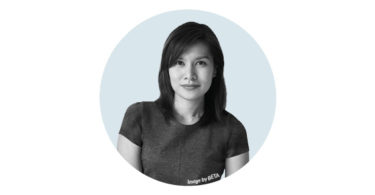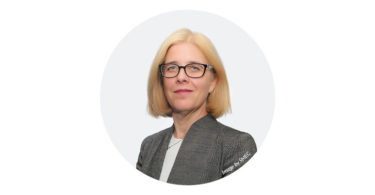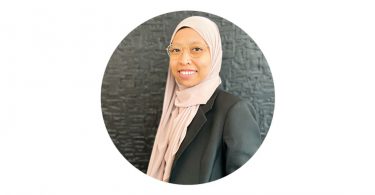An architect and a property developer, executive director Siow Chien Fu (NCARB, AIA, IPDM, APAM) is founder and principal partner of RDC Arkitek Sdn Bhd in Johor Bahru, Malaysia. It is an established and well-known company involved in major housing schemes and township developments in the state. The firm also has branch offices in Kuala Lumpur and Malacca.
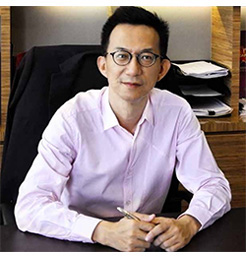 After graduating with a Bachelor of Architecture degree from the University of Kansas, USA in 1986, he worked with Devine Architects Inc. and Gould Evans Associates, both in Kansas. Siow won a number of notable design competitions in the early years of his career. In 1989, he also negotiated and secured a major contract for Devine Architects Inc. for the restoration of Singapore Raffles Hotel for a sum of S$120 million. Siow passed the National Council of Architectural Registration Boards (NCARB) exam in USA and became a registered, licensed architect in the state of Missouri, as well as a corporate member of the American Institute of Architects (AIA). He is also a member of Pertubuhan Architect Malaysia (PAM) and Institute Perekabentuk Dalam Malaysia (IPDM). He joined Singapore’s Regional Development Consortium (RDC) Architects in 1991 as a senior architect and was promoted to an associate.
After graduating with a Bachelor of Architecture degree from the University of Kansas, USA in 1986, he worked with Devine Architects Inc. and Gould Evans Associates, both in Kansas. Siow won a number of notable design competitions in the early years of his career. In 1989, he also negotiated and secured a major contract for Devine Architects Inc. for the restoration of Singapore Raffles Hotel for a sum of S$120 million. Siow passed the National Council of Architectural Registration Boards (NCARB) exam in USA and became a registered, licensed architect in the state of Missouri, as well as a corporate member of the American Institute of Architects (AIA). He is also a member of Pertubuhan Architect Malaysia (PAM) and Institute Perekabentuk Dalam Malaysia (IPDM). He joined Singapore’s Regional Development Consortium (RDC) Architects in 1991 as a senior architect and was promoted to an associate.
Siow started and founded RDC Arkitek Sdn Bhd in 1992 and became one of its partners from 1994 until now. Under his stewardship, the company has won several accolades, including the award by BCI Asia for being one of the top 10 market leaders in architecture for seven years (2005, 2009, 2010, 2011, 2013, 2014 and 2015). Apart from architectural practice, Siow is also actively involved in other businesses such as the Eco Tree Hotel in Malacca and Sai Wan, Hong Kong; Bestari Bestmart Sdn Bhd in Johor Bahru, a commercial and retail complex with a fresh market; and Market Hall Sdn Bhd in Kuala Lumpur, a similar complex with a fresh market.
His latest project—Capital 21—is an integrated thematic mall that sets out to make a huge difference in the retail landscape in Johor Bahru, Malaysia. Based on the concept of highlighting the essence of five continents across the mall’s five floors by showcasing each continent’s major capital cities, Siow partnered with BCI Asia to organise an interior design competition to seek creative concepts from professional architects and interior designers worldwide. Having just closed the competition in May, and before the winners are picked from the multitude of entries received from all over the world in June, Construction+ caught up with the man of the hour to chat about what it takes to straddle both the creative and commercial sides of the industry, and why the time is now to invest in property in Malaysia.
Having had the experience of being a practising architect and now a full-time property developer must give you a distinct advantage in your work—share with us about it? What were the key ideas that led to you becoming a developer? Tell us about a project or accomplishment that you consider as the most significant? What are the main challenges you are facing in the marketplace? And how do you tackle these issues? What are your three fundamental pieces of advice to young, upcoming architectural students in Malaysia? “The Malaysia government has also invested heavily in improving the infrastructure, i.e., the Rapid Transit System, highways and overhead bridges, and this complements the property development industry.” How do you think Malaysia is doing as compared to the rest of the countries in Asia in terms of its property development? Property values in Malaysia are still very attractive, as the prices of property remain relatively cheap; there is a room for appreciation. The Malaysia government has also invested heavily in improving the infrastructure, i.e., the Rapid Transit System, highways and overhead bridges, and this complements the property development industry. We still have space to grow and land to open up in Malaysia, unlike some other Asian countries. Are there gaps in the local building and construction landscape that should be filled? Do you think the Malaysia market is more reliant on local or foreign investments? Going forward, what is the outlook for the Malaysian construction industry in the next two to three years? What future opportunities are there for Capital 21? How do you drive your business during slower economic growth? And what is your advice to emerging companies in the marketplace?
Yes. Having the experience from both sides has helped me make prudent and better decisions, especially commercial ones. As an architect you do what you like, sometimes without commercial considerations. In my position, there is a need to find a balance or compromise between architectural aesthetics and what I need as a project developer. This way, the design of the product becomes more realistic and I can reconcile decisions from my architect side and commercial decisions I make as a developer.
For me, it was a natural transition to go from an architect to property developer. Like other architects, I have accumulated valuable experience and picked up on issues faster as it has been part of my job to draw and plan for other developers.
Capital 21, to me, is a very good project where we came up with a concept to gather all the world’s five continents under one roof to share with local residents and consumers the opportunity to feel and understand different cultures from different countries.
The main challenge I am facing in the marketplace is that we are going through a period of worldwide economic challenges. Malaysia’s financial institutions will have to play a very important role if we are to overcome them. That is why we have to be prudent; disciplined enough to work within our constraints; and ensure that our projects are completed within the timelines set and within the budgets planned.
The most fundamental ones are: i) to have an innovative mind and to always remain motivated; ii) to commit to hard work; and iii) to dare to dream.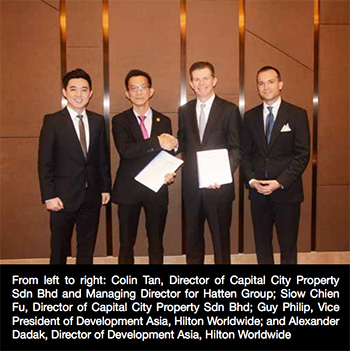 You’re developing Capital 21, a major mixed development project in Johor Bahru. What’s special about this project and when is the expected completion date? It will be the first thematic mall in Malaysia where major capital cities around the world will be highlighted under one roof. It will also be the first festival mall in the world, and one to incorporate a first-ever world museum.
You’re developing Capital 21, a major mixed development project in Johor Bahru. What’s special about this project and when is the expected completion date? It will be the first thematic mall in Malaysia where major capital cities around the world will be highlighted under one roof. It will also be the first festival mall in the world, and one to incorporate a first-ever world museum.
This can be anything from regulations and standards to technology and practices. Yes. Contractors tend to try to keep their cost at the very minimum. This is due to viewing things in the short term and not planning for the long run. This mindset of keeping cost to the minimum will indirectly affect the general quality of construction. Poor maintenance of the building is another key area we have to improve on. Malaysia currently has strong adequate regulations and statutory requirements, passed down largely from British colonial times.
What does this mean to the industry as a whole? Seventy percent is aimed at the local market while 30 percent targets the foreign market. In long run, we will attract foreigners to invest in Malaysia, as our prices are still very attractive.
We will go ahead with our plans to construct Capital 21; one hotel tower; one tower of serviced suites; and three serviced apartment towers.
We need to have very innovative and attractive packages to our business partners and associates in this challenging time. We need to convince our customers now is in fact a good time to invest and plan ahead so that they are ready when the economy takes off.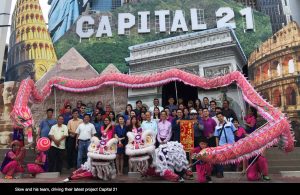

 Hong Kong
Hong Kong Singapore
Singapore Indonesia
Indonesia Tiếng Việt
Tiếng Việt ประเทศไทย
ประเทศไทย




